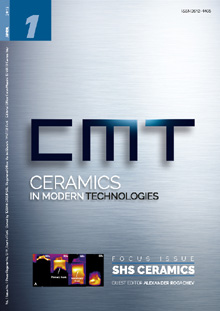- Home
- About us
-
Activities
-
Journals and magazines
-
Meeting and congresses
-
- Contact us

Abstract
Technological progress in the field of additive manufacturing (AM) as a shaping method is inexorably advancing. In particular, AM provides the possibility to manufacture functionally graded components using a voxel model method. In medical technology, especially in implantology, these new structures can open new applications. In order to increase the ingrowth of cells into an implant, a function-optimized structure with a defined porosity gradient seems to be advantageous. In addition, ceramic implants are known for their excellent biocompatibility. From the material side, alumina toughened zirconia is a particularly interesting material. In combination with AM processes, completely new possibilities arise for the production of novel implants. Vat photo polymerization of ceramics (CerAM VPP), also known as lithography-based ceramic manufacturing (LCM), is suitable to realize defined and filigree structures. This article will show results from the process development for CerAM VPP of ATZ components with a defined graded porosity.